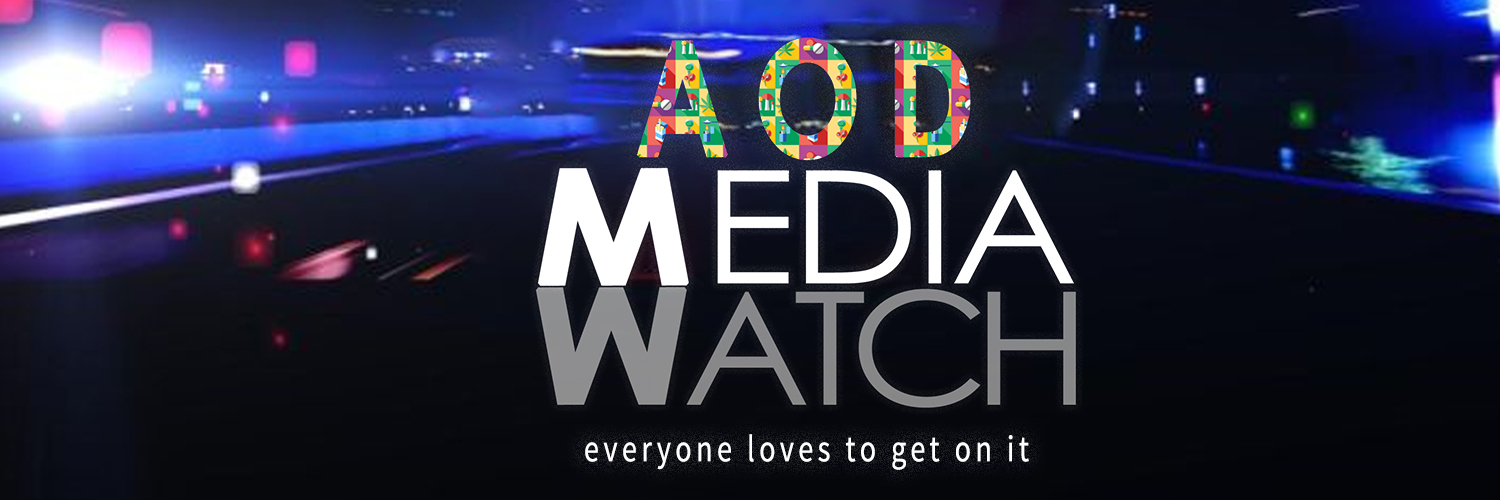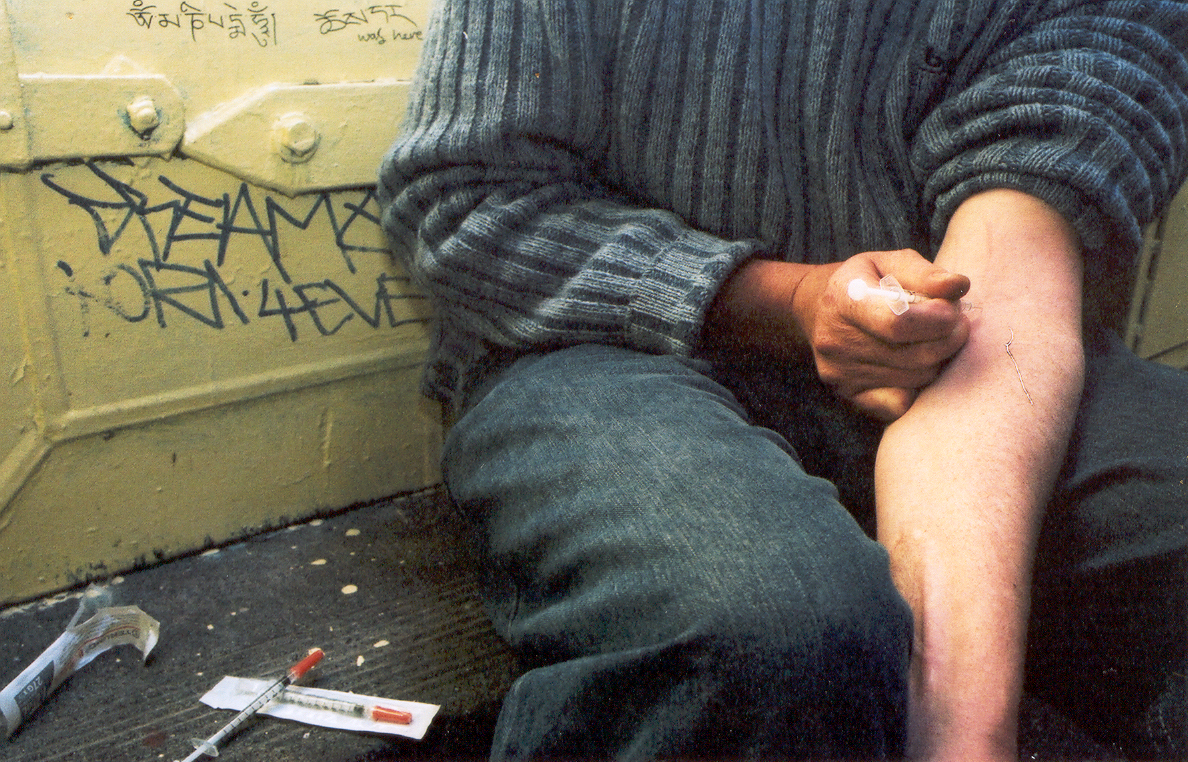A Shot In the Heart. Our drug crisis laid bare’ was the headline on the front page of Sydney’s Daily Telegraph on the 28th of April.

A large photo took up most of the page of a bedraggled man injecting drugs while sitting on some steps. The discussion continued on some inner pages (4-5). An online version of the piece (originally titled ‘Junkie Shame on Sydney’s Streets’) can be found here.
The caption under the front page photograph says ‘Filth, caked and clasping a syringe like a surgeon, a wretched junkie has laid Australia’s drug crisis bare on the streets of Sydney’s CBD’. The text goes on: ‘In appalling scenes at the height of yesterday’s morning rush hour, the dead-eyed addict spent 10 sickening minutes in the gutter of a Surry Hills lane trying to inject himself, oblivious to Sydney siders walking past him on their way to work’. Police Minister Troy Grant labeled the images captured by the Daily Telegraph as distressing and disturbing: “At 9 am in broad daylight, people should feel safe to walk to work without being confronted with such a horrific scene’ he said.”
The way in which the man is labelled a ‘junkie’ and ‘dead-eyed addict’ only perpetuates the marginalisation of an already socially isolated population. Such stigma limits the ability of people to integrate into society. Many readers will interpret the description of the man as an indication that his circumstances are a typical result of using illicit drugs. For the members of the public who don’t inject drugs, this accentuates an ‘us-versus-them’ divide.

Coverage of problems associated with illicit drugs is more extensive in the media than coverage of problems associated with legal drugs such as alcohol. Consequently it is hardly surprising that illicit drugs are perceived as a much more salient issue for the community than legal drugs and that the community often reacts excessively to illicit drugs – and more permissively to the greater problems associated with legal drugs. Many readers will interpret the description of the man photographed as a ‘dead-eyed addict’ as an indication that the man photographed is a typical result of the use of illicit drugs.
The victimless ‘crime’ of public drunkenness used to be an offence in NSW until the 1970s. It still is an offence in Victoria and Queensland. Many of the same arguments heard now in the debates about the reliance of law enforcement to control illegal drugs were heard when the Wran government removed public drunkenness as an offence in NSW. So long as a person is not harming others, their state of consciousness should not be the business of law enforcement.
Many members of the community will agree with the NSW Police Minister that they feel confronted when encountering someone injecting drugs in a public place. After all, people dependent on alcohol have a somewhat private place that they can go to when they want to have a drink. It’s called a ‘pub’. Why doesn’t the community also provide places where people who wish to inject illegal drugs can do so? At present, Australia – a country with an area of 7.5 million km2 – has only one place such where people can inject drugs under supervision: the Kings Cross Medically Supervised Injecting Centre. This centre, opened in 2001, has been evaluated independently about a dozen times with multiple and major positive findings but only few and minor negative findings. Why, when the need to do something effective is so great and the benefits of a Medically Supervised Injecting Centre are so well documented, has Australia failed to establish any more Medically Supervised Injecting Centres in the last 16 years?

The description of the photograph reveals that it was taken in a lane in Surry Hills, the suburb which is also the headquarters of Rupert Murdoch’s News Corp media (including the Daily Telegraph). Many Australian media organisations have opposed evidence-based drug law reform, or entrenched the stigmatisation of people who inject drugs; however, it was the Daily Telegraph that campaigned vigorously to prevent the establishments of Australia’s heroin trial in 1997. Research shows that 28% of all Australian media coverage regarding the trial was published by the Daily Telegraph and 100% of its content was negative towards the proposed trial. The Daily Telegraph asserted that the trial would send ‘the wrong message’.
If Australia had started a quarter century ago reforming its drug laws and carrying out a heroin trial, the bedraggled man in the photograph may well by now have been leading a normal and useful life, looking after his family, working for a living and paying his share of taxes. The exploitation of the man in the Daily Telegraph photo perpetuates the marginalisation of people who use drugs and further limits drug policy debate in Australia.
Dr Alex Wodak AM, President, Australian Drug Law Reform Foundation
AOD Media Watch Reviewers:
- Paul Aiken, Evaluation and Advocacy Team Leader, UnitingCare ReGen
- Dr Stephen Bright, Senior Lecturer of Addiction at Edith Cowan University & Adjunct Research Fellow at the National Drug Research Institute, Curtin University
Disclaimer: The authors take full responsibility for the content of this article

